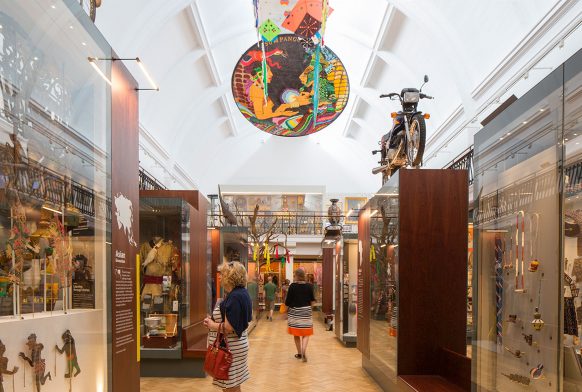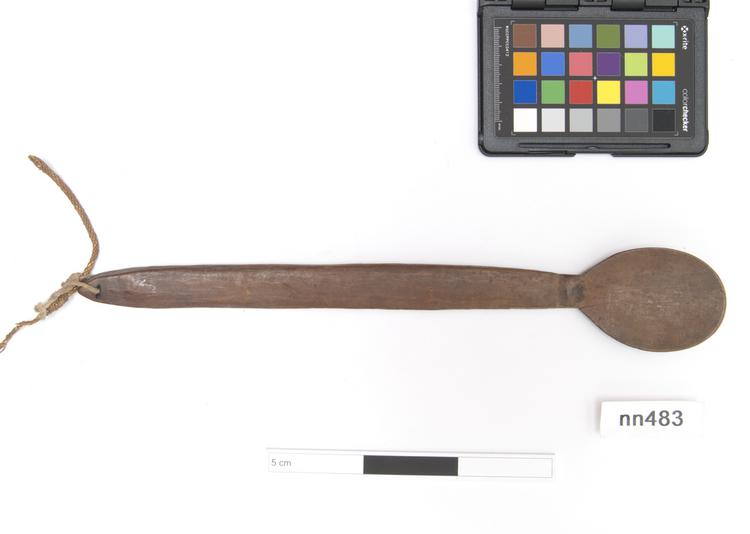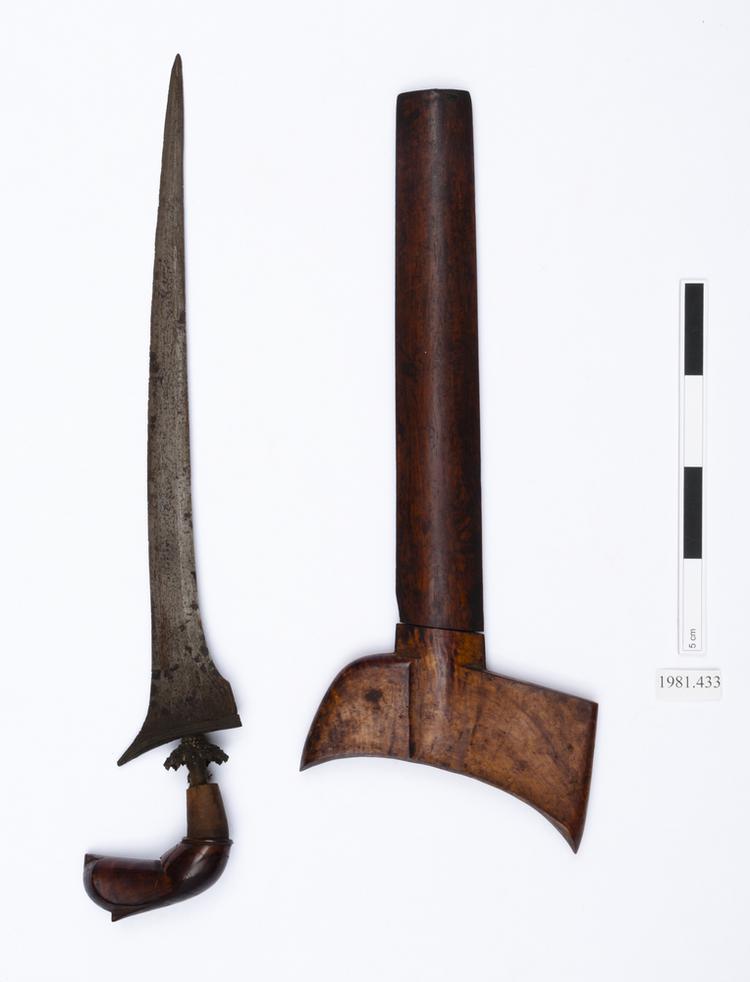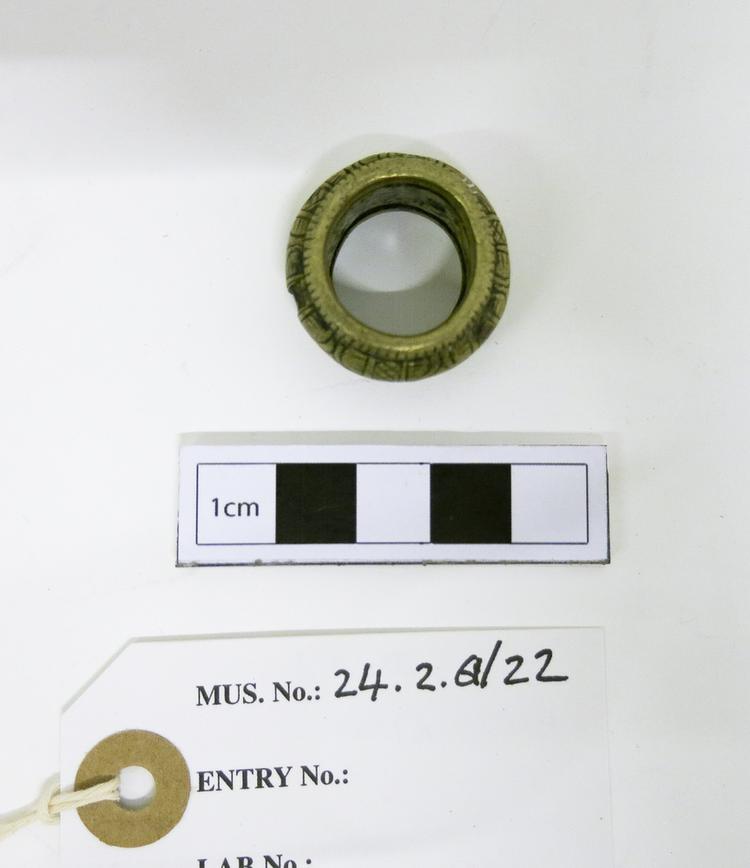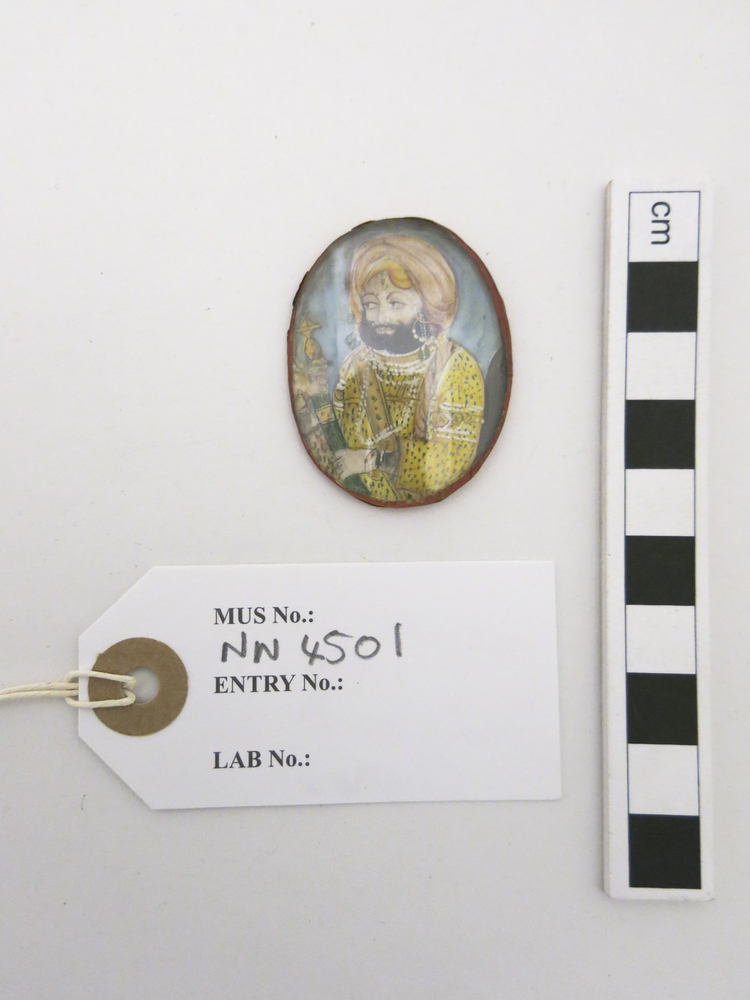
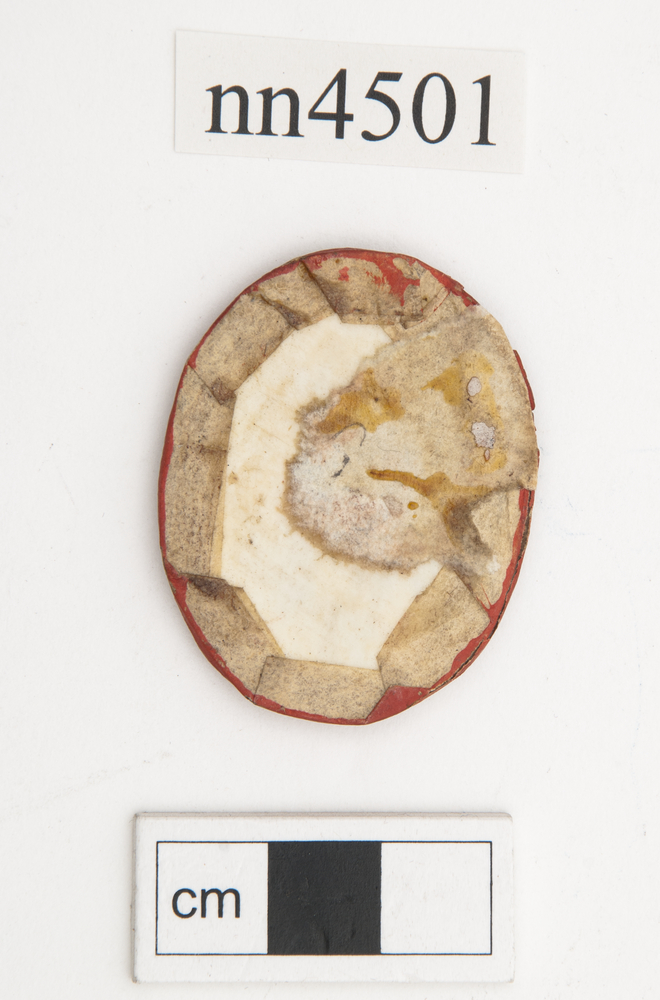

Miniature of Raja Jawahir Singh (died 1843) wearing a turban and dressed primarily in richly-patterned, yellow robes. His beard is neatly tied up in the emerging style of the day. He is positioned against a pale, sky blue background. He clasps in both hands the green, velvet-covered scabbard of his gold-hilted tulwar (curved sword). He wears an embroidered gatra (baldrick) over his right shoulder and a black lacquered hide shield over his left. His jewellery consists of several necklaces, bazuband (arm-band) and large, double-looped earrings made of gold, pearls and emeralds. Gouache (possibly heightened with gold) on ivory.
In the years following the death of Maharaja Ranjit Singh in 1839, his empire crumbled, devoid of its prop for the first time in its forty-year existence. His court and its attendants soon descended into bitter conflict. The administrative system, which had been the lynchpin of Ranjit Singh's control over his territorial possession, was reduced to chaos. Likewise, his prized Khalsa Army, nurtured into the premier fighting force of Asia, became a law unto itself. Control passed down the ranks to elected representatives who were at constant odds with their Punjabi officers, now reduced to mere drill sergeants. Seeing this, many of the once-influential foreign generals fled, either back to their homelands in Europe or into self-imposed exile In 1844, one of those who attempted to wield control as wazir (chief minister) was Raja Jowahir Singh, the eldest brother of Maharaja Ranjit Singh’s youngest queen, Maharani Jind Kaur. His administration was a pathetic one, and destined not to last the year. When the Khalsa Army discovered that he had ordered the assassinations of two reputed sons of the late maharaja (and therefore both rivals to Jowahir Singh’s nephew, Maharaja Duleep Singh), his fate was sealed. The army council sent him word that he was no longer wazir. After deliberating for 15 days, they summoned him on 21 September 1845. He came on an elephant, holding his nephew, the young maharajah, in his arms. Maharani Jind Kaur accompanied him on another elephant. Jowahir Singh had, as escort 400 horsemen, and two elephants’ loads of rupees for bribes. As soon as the cavalcade left the fort, an ominous silence pervaded the army. Dhuleep Singh was received with royal honours, but the procession was stopped as it reached the centre. The escort moved away and a battalion marched up and surrounded the elephants. Ten members of the army council then came forward, and forcing the Maharani away, ordered Jowahir Singh to dismount. He however attempted to parley, when a tall Sikh, striking him in the face, removed Dhuleep Singh from his arms. A soldier, who had, presumably, received orders, mounted the ladder and stabbed Jowahir Singh with his bayonet. He was brought down and hacked to pieces by the soldiery.



